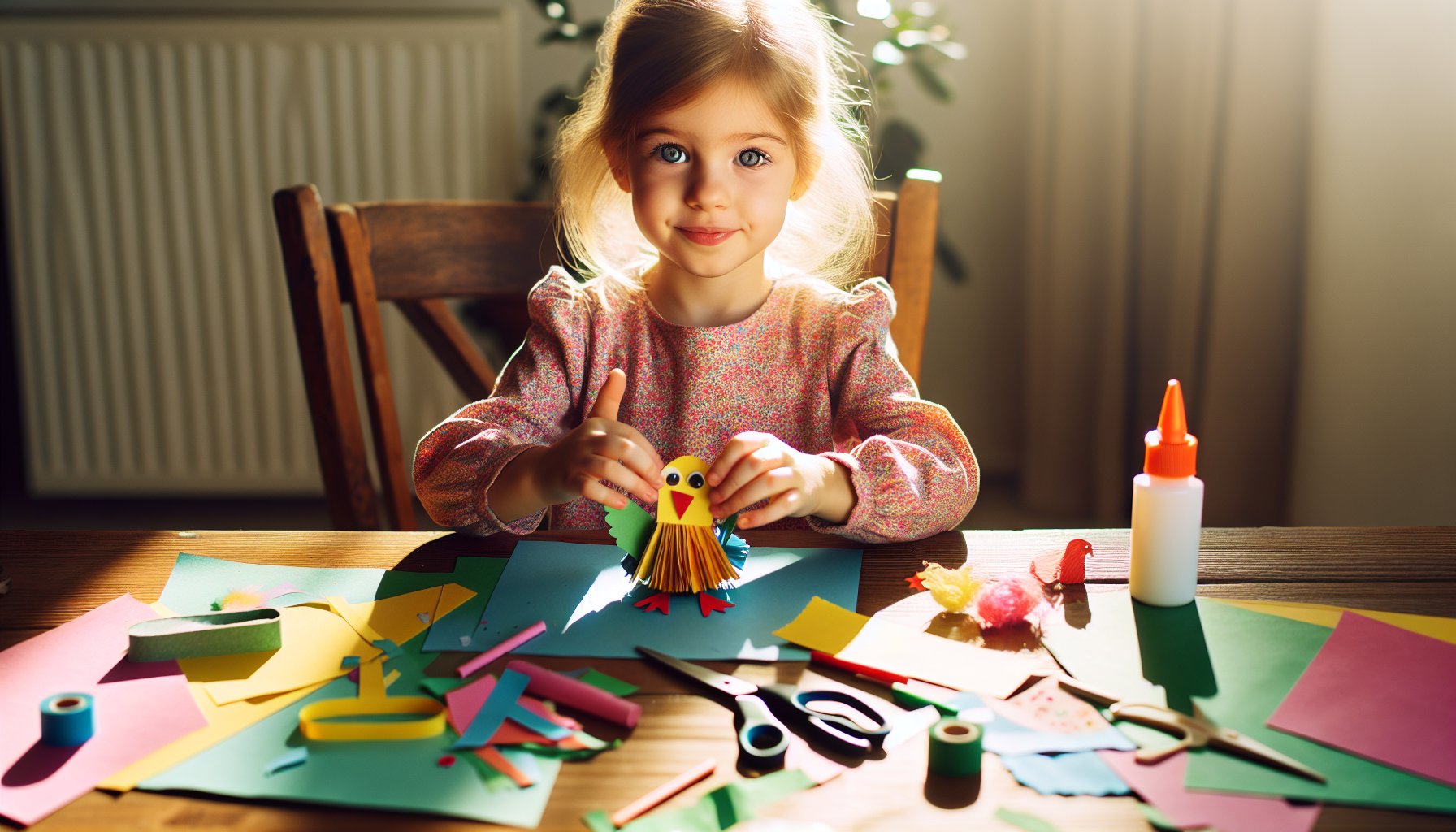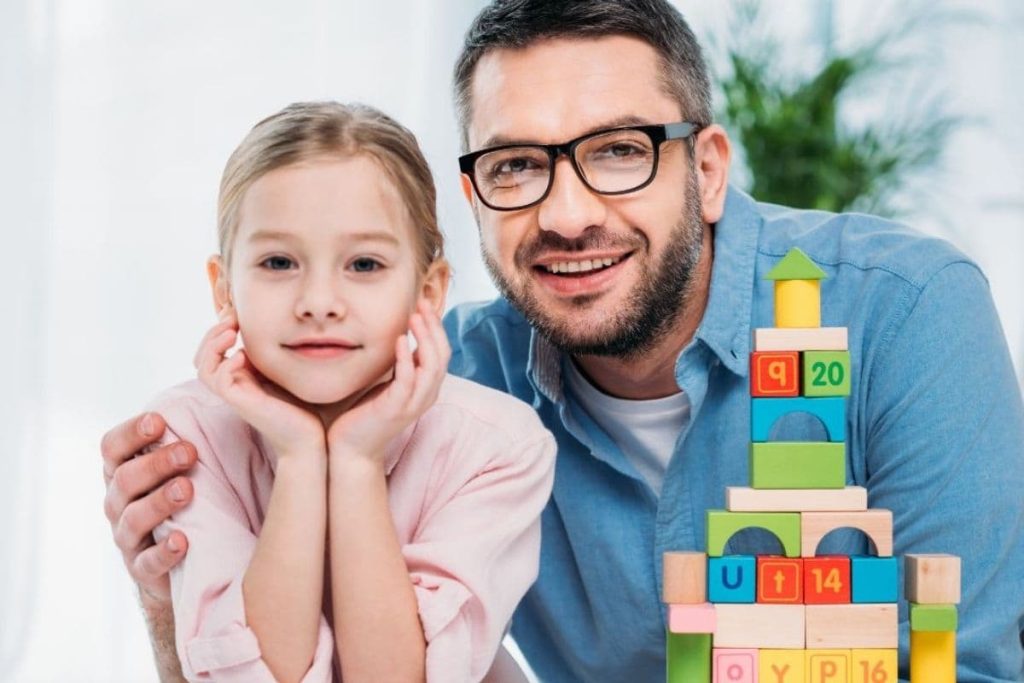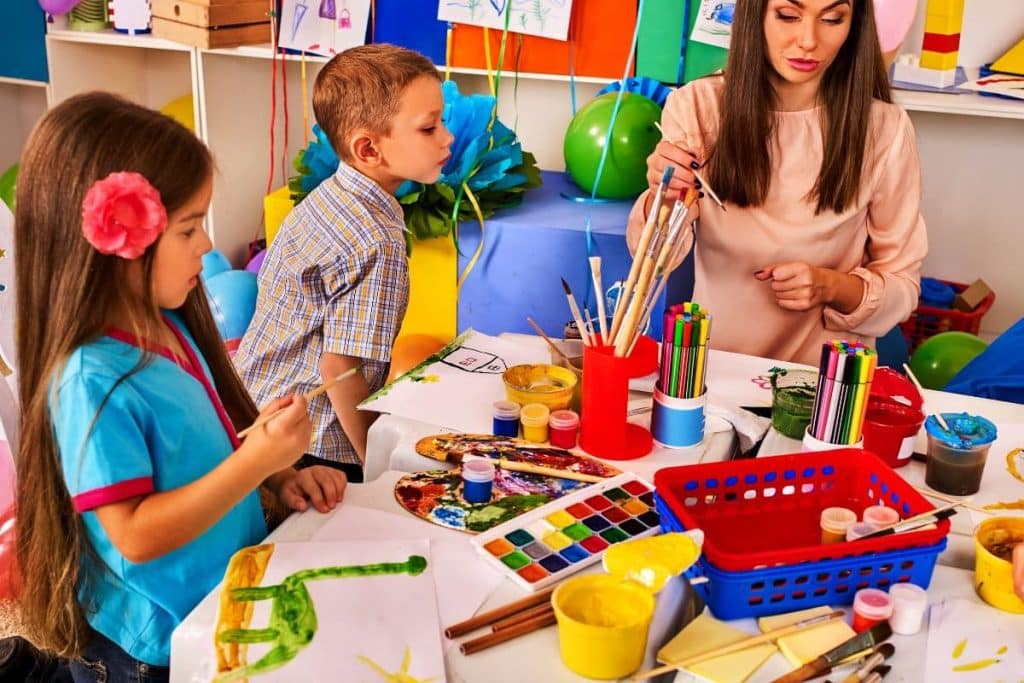Wondering how to keep toddler busy without tv? Our guide cuts through the noise with practical activities that go beyond mere entertainment. Expect hands-on ideas from sensory bins to obstacle courses—each promoting curiosity and learning, minus the screen.
Key Takeaways:
- Sensory play, like using a sensory bin with various textures, not only entertains toddlers but also stimulates their development and keeps their interest piqued with regular material rotations.
- Craft time lets kids channel their inner artists and enhance their storytelling skills, using simple tools such as paper and crayons to foster creativity without expensive gadgets.
- Despite the potential mess, play dough offers limitless opportunities for creativity and helps improve toddlers’ motor skills and sensory experiences while keeping them fully engaged.
Engage With Sensory Play
Kicking off our list is sensory play, a well-known pillar of a child’s development. Promoting hands-on learning and exploration, sensory play provides an effective way to engage your toddler without the need for screens. However, it’s not just about throwing a bunch of toys into a bin and calling it a day. The setup of your child’s sensory play area is key. Here are some tips to keep in mind:
- Keep it clean and organized to help your child stay focused during playtime.
- Use containers or trays to separate different sensory materials.
- Provide a variety of textures, such as sand, water, or rice.
- Include different objects for your child to manipulate and explore, such as scoops, spoons, or small toys.
- Rotate the materials regularly to keep the play experience fresh and exciting.
By following these tips, you can create a sensory play area that reduces your child’s screen time and makes playtime more productive.
You might wonder: what constitutes a sensory bin? Imagine a container filled with:
- dried rice
- beans
- sand
- various objects for your child to discover
It’s a treasure trove of textures, colors, and shapes that will keep your child engaged and entertained.
One of the appealing aspects of sensory play is its dynamic nature rather than being a static activity. You can switch up the items in the sensory bin every now and then to keep things fresh and exciting for your child. It’s like bringing in new toys on a regular basis without the extra cost! This way, your child will always be excited and curious to explore their sensory bin.
Unleash Creativity with Craft Time

Following sensory play comes craft time. Craft time is not just about making pretty things, but it’s a cool way for kids to show off their creativity and do something fun instead of being glued to the TV. But it doesn’t have to stop at basic crafts. For older kids, they can explore their storytelling skills by creating their own cartoons. They can draw their very own cartoon characters and come up with unique stories for them.
This not only gets their creativity going but also helps them get better at telling stories.
To support your child’s crafting, creative toys and storytelling adventures, all you need are simple tools like paper and crayons. These basic tools allow kids the freedom to create their own stories and use their imagination without the need for fancy or expensive toys.
Ultimately, craft time is a great opportunity for your child to express their creativity, and when directed properly, it can be a great alternative to screen time. So, why not set up a craft corner in your home and let your child’s creativity soar?
Play Dough Adventures
Play dough adventures serve as another excellent method to engage your toddler. Play dough offers endless fun and creativity. It allows your child to create shapes, animals, or even their favorite characters.
Although, the potential mess created by play dough often raises concerns. But don’t worry, there are ways to manage it. You can:
- Set up a play area on an easy-to-clean tiled floor or a table with a wipeable surface
- Use a plastic tablecloth or mat to catch any spills
- Provide aprons or old clothes for your child to wear
- Keep wet wipes or a damp cloth nearby for quick clean-ups
This way, you can let your child’s creativity run wild without worrying too much about the aftermath.
In terms of what to do with play dough, the possibilities are endless! Your child can set up a pretend bakery with play dough cakes and cookies, or create a zoo with various animal figures, or even build a garden with a few flowers. All these scenarios spark imagination and storytelling, making play dough an excellent tool for creative and pretend play.
Above all, play dough is not just for fun. It helps kids get creative, improves their motor skills when they squish and shape the dough, and provides sensory play, which is important for their growth. So, the next time you’re looking for an activity to keep your child busy, consider bringing out the play dough and watch their imagination come to life.
Indoor Obstacle Course
An indoor obstacle course presents a fun way to entertain and keep kids active indoors without needing screens. It’s super fun and can be set up using items you already have at home.
You can use cushions, blankets, and furniture to create an awesome indoor obstacle course for your kids. The best part is that it keeps them active, and they can have a blast navigating through the course.
Setting up the obstacle course can be as simple or as elaborate as you want. You can create a simple course with a few cushions and a crawl-through tunnel using chairs and a blanket. Or you can make it more challenging by adding a pillow mountain, a tightrope walk using a masking tape line on the floor, and a tunnel made of cardboard boxes. Just make sure the course is safe and age-appropriate for your child.
An indoor obstacle course is not just fun, but it’s also great for your child’s motor skills and problem-solving abilities. They have to figure out how to navigate through the course, which involves a lot of:
- crawling
- jumping
- balancing
- other physical activities
So, on a rainy day or when going outside is not an option, why not set up an indoor obstacle course and let the fun begin?
Constructive Building Blocks

Not merely toys, building blocks—be they Legos, wooden blocks, or even cardboard boxes—serve as learning tools. Playing with building blocks helps kids develop their fine motor skills, hand-eye coordination, and concentration. It also gets them thinking logically and solving problems. Plus, it even introduces them to math, science, and language concepts. And let’s not forget, it’s great for keeping kids motivated and engaged too.
Kids can start playing with building blocks as early as 6 months old. Initially, they might just hold and bang them, but their play becomes more complex as they grow. This progression helps them develop their problem-solving skills and spatial reasoning. It’s an excellent activity for those few minutes of quiet time or for keeping them busy while you’re cooking dinner.
Apart from regular blocks, there are also puzzles and kinetic sand that can keep toddlers entertained. These toys provide a different kind of challenge and can be a good variety to the usual block-building game box.
So, the next time you’re shopping for toys, consider getting some building blocks. They are not just entertaining, but also educational. And who knows, you might have a little architect or engineer in the making!
Storytime Magic
Storytime possesses a certain magical quality. It’s a time when imagination comes to life, and ordinary things become extraordinary. But storytime isn’t just about the stories. It’s also about the bond it creates between you and your child, and the love for reading that it fosters.
Audiobooks are a great option for little ones who can’t read yet. They can sit down and flip through the pages while listening to the story, which makes them feel like they’re reading and keeps them interested. ‘Princess in Black’ and ‘The Magic Treehouse’ series are highly recommended for young listeners. They have really cool stories that can totally grab their attention.
But it’s not just about the stories. The setting can make a big difference too. Setting up a cozy, outdoor space like in bed, on the porch, or in a blanket fort can make reading a unique and relaxing experience for your child. This cool and comfy setting can make reading more appealing to them, and even encourage them to explore more books.
So, if you haven’t already, why not incorporate storytime into your child’s daily routine? It’s not just a fun activity, but it’s also educational and beneficial for your child’s development. Plus, it’s a great way to bond with your child and instill in them a love for reading.
Gardening Indoors
The realm of gardening extends beyond the outdoors. You can also do it indoors, and it’s a fantastic activity for your child. Indoor gardening helps kids learn to be responsible and patient. It’s also a great opportunity to play verbal games related to gardening, like naming plants or guessing what they need to grow.
To start indoor gardening with kids, you’ll need:
- Kid-friendly gardening tools
- Potting soil
- Empty yogurt containers to use as pots
- Some potted herbs or plants, like a few flowers
These are all you need to get started.
For kids who are just starting with indoor gardening, some of the best plants to start with are:
- Golden Pothos
- Snake Plant
- Spider Plant
- Succulents
- Peperomia obtusifolia
- Syngonium
- ZZ Plant
These plants are easy to care for and can help kids discover the joy of gardening and taking care of living things.
Parents can play a big role in helping their kids with indoor gardening. Here are some ways you can get involved:
- Give your child their own plant
- Explain the basics like watering and sunlight
- Involve them in care routines
- Encourage them to observe and ask questions
- Make it a fun experience with sensory activities
This way, your child can create a bond with their plant and learn valuable life skills in the process, as they child create a sense of responsibility and care.
Interactive Music Session
As a universal language, music finds appreciation among everyone, including toddlers. So why not create an interactive music session at home? It can be as simple as singing songs, dancing, or playing homemade instruments. Doing this can keep your child entertained and engaged for a good amount of time.
You can create a fun and interactive environment for musical exploration by:
- Making kid-friendly spaces
- Getting some musical instruments or making your own using household items
- Planning activities like singing songs or playing ‘Simon Says’
- Keeping the sessions short and engaging
As for homemade musical instruments, you can make:
- Shakers
- Tambourines
- Drums
- Flutes
You can find instructions for making these on sites like FeltMagnet or Play Ideas. These homemade musical instruments can help your child play independently and explore their musical creativity.
To ensure your kid stays interested during the music session, keep things positive, play some interactive games, let them move and dance, get them involved in group activities, and make sure to maintain eye contact to build a connection. Interactive music sessions are awesome for kids because they help improve communication and motor skills, emotional and cognitive development, and give them more chances to socialize. They can also encourage outdoor play when held in a backyard or park setting.
Artistic Expression Through Painting

Children can also express themselves excellently through painting. It helps them explore colors, shapes, and their own creativity. Plus, it’s a fun way to pass the time, especially on rainy days when going outside is not an option.
To set up a painting station that’s kid-friendly, follow these steps:
- Use an easel or art desk.
- Put down a protective tablecloth.
- Make sure art supplies are easy to reach.
- Use washable and non-toxic paints.
- Make sure the area is well-lit.
- Give them aprons to protect their clothes.
This way, you can let your child’s creativity run wild without worrying too much about the mess.
For washable paints, Crayola Washable Paints and Sargent Art Washable Tempera Paint are highly recommended. They’re super bright, easy to clean, and safe for little artists. So, why not set up a painting corner in your home and let your child’s creativity soar?
Discover the Great Outdoors
While outdoor play is undoubtedly fun, it is also essential to your child’s development. It allows them to explore, discover new things, and learn about nature. Activities like scavenger hunts and nature walks can keep children active and curious.
Scavenger hunts can be particularly exciting for kids. You can make a scavenger hunt by telling your kid to hunt for things in nature or in the yard that start with a certain letter or fit certain criteria. It’ll get them interested in the outdoors and spark their curiosity.
Apart from scavenger hunts, there are tons of other things kids can do outside. They can:
- play with a ball and stick
- go for a bike ride
- go hiking
- start a rock collection
It’s all about having fun and learning at the same time.
So the next time you’re looking for an activity to keep your child busy, why not go outside and explore the great outdoors?
Imaginary Playdates
Imaginary playdates provide a delightful avenue for your child to interact with their favored toys or stuffed animals. It’s a beautiful way for them to explore their creativity and express their thoughts and emotions.
During these playdates, your child can pretend to be a chef, doctor, teacher, or astronaut. They can also play make-believe or set up a pretend supermarket. It’s all about sparking their imagination and making learning super fun.
Parents can help by organizing activities like tea parties, playing with dolls, or setting up pretend kitchens, schools, or other fantasy worlds. Including other family members can make it more interactive, and using props and costumes can make it more immersive, which can help with cognitive and emotional development.
So, why not set up an imaginary playdate for your child? It’s not just fun, but it’s also educational and beneficial for your child’s social and emotional development.
Puzzle Time
Beyond being an enjoyable pastime, puzzles serve as a valuable learning tool. They can help your child develop problem-solving skills, improve their fine motor skills, and enhance their concentration.
There are a variety of puzzles suitable for different age groups. For little ones aged one to three, simple puzzles with three to four pieces are the best, like peg puzzles. Brands like:
- Sinelien
- Crocodile Creek
- Djeco
- Londji
Interactive games and activities are great for young kids in this age group, as they keep kids engaged and entertained.
To make puzzle time even more fun, try:
- interactive puzzle games like ‘Feed the Puppy’
- asking open-ended questions to get them thinking creatively
- having a puzzle race for some friendly competition
All these can make puzzle time a more engaging and educational experience.
Parents can also help during puzzle time by:
- Helping to make their kid’s fingers stronger
- Chatting and asking questions about the puzzle
- Giving supportive advice
- Celebrating their kid’s puzzle wins
- Helping them develop fine motor skills
So, the next time you’re looking for an educational activity to keep your kids busy, consider watching cartoons or doing some puzzles.
Home Treasure Hunt
A home treasure hunt offers both fun and education for your child. It promotes problem-solving skills and can get them excited about discovering new things.
To set up a home treasure hunt, follow these steps:
- Come up with cool clues that make the kids think and laugh.
- These clues should lead them to different spots around the house.
- Hide little treasures like toys or stickers in each spot.
The treasures you hide can be anything from small toys, stickers, candy, coins, or art supplies. The goal is to make the hunt exciting and rewarding for your child.
Treasure hunts can be a great way to keep your child busy on a rainy day or when they’re bored. It’s also a fun way to celebrate special occasions like birthdays or holidays. So, why not try setting up a treasure hunt at home and see your child’s face light up as they discover each hidden treasure?
Culinary Helpers
Involving your child in kitchen activities provides a recreational and edifying experience. It’s a great way to teach them about food and cooking, and it can also help develop their fine motor skills and hand-eye coordination.
Depending on your child’s age, they can help with different tasks in the kitchen. Younger ones can help set the table or put away groceries, while older ones might be able to help with more complex tasks like chopping vegetables.
But cooking isn’t just about the tasks. It’s also about the learning experience. Through cooking, your child can learn about:
- Healthy eating
- Time management
- Responsibility
- Creativity
- Problem-solving
To make cooking fun for your child, engage their senses. Let them smell the spices, taste the ingredients, and feel the textures. You can also let them help with meal planning or let them choose a special dish to cook. This way, they’ll feel more involved and excited about the process.
DIY Board Games
While board games serve as a wonderful source of entertainment for your child, have you considered crafting your own? DIY board games can be a fun and educational activity for your child. They can help your child develop their creativity, problem-solving skills, and social skills.
To create a board game, follow these steps:
- Pick a theme.
- Gather materials like an old serving tray, patterned paper, and small plastic animals for game pieces.
- Get creative and repurpose common items like hangers to add some fun.
Making their own board games is not just a blast for kids, but it also helps them learn and improve their language skills, critical thinking, and patience. Plus, it reinforces their learning and teaches them teamwork, which is pretty cool.
So, the next time your child is bored, why not suggest making their own board game? Not only will it keep them busy, but they’ll also end up with a unique game that they can play again and again.
Water Play Fun
Water play, offering a delightful sensory experience, can captivate your child’s eyes for hours. You can set up a water table in your garden or simply fill the bathtub with toys and containers for your child to explore.
Setting up a water play area at home isn’t as hard as you might think. All you need is a DIY water table made from PVC pipe and a storage container. You can find many tutorials and ideas online that can guide you through the process.
As for water toys, you can make your own using household items. Some ideas include:
- Water Sponge Toys
- DIY Sponge Waterbombs
- Fish Diving Toys
- Mini Water Blobs
These toys can make water play even more fun and exciting for your child.
So, the next time you’re looking for a fun and engaging activity for your child, why not try water play? It’s not only fun, but it’s also a great sensory experience that can boost your child’s development.
Role-Playing Scenarios

Role-playing scenarios facilitate your child’s development of social skills and empathy. It can be as simple as playing doctor or storekeeper or as elaborate as a whole day in a pretend school.
During these playdates, your child can pretend to be:
- a chef
- a doctor
- a teacher
- an astronaut
They can use their imagination to create scenarios and play out their own suggestions for different roles. This can spark their creativity and make learning super fun.
Parents can help by organizing activities like tea parties, playing with dolls, or setting up pretend kitchens, schools, or other fantasy worlds. Including other family members can make it more interactive, and using props and costumes can make it more immersive, which can help with cognitive and emotional development.
So, why not set up an imaginary playdate for your child? It’s not just fun, but it’s also educational and beneficial for your child’s social and emotional development.
Sorting and Organizing
Sorting and organizing activities not only impart valuable life skills to your child but also effectively keep them engaged. Some examples of sorting and organizing activities for your child include:
- Matching socks
- Organizing toys by color
- Sorting books by size or genre
- Sorting objects by shape or texture
These activities can be both fun and educational, keeping your kids entertained.
There are many ways to make sorting and organizing fun for your child. Here are some ideas:
- Play Tidy-Up Songs
- Sort animals or animal pictures
- Organize a dollhouse
- Sort household objects like buttons
All these activities can make sorting and organizing a more enjoyable experience for your child.
Sorting and organizing are not just about tidying up. They are also about teaching your child about categories, sequences, and patterns. Plus, they can also improve your child’s fine motor skills and hand-eye coordination.
So, the next time your child is bored, why not suggest a sorting and organizing activity? It’s a fun and educational way to keep them busy, and you’ll also end up with a tidier home!
Creative Movement
Creative movement provides yet another effective method to maintain your child’s activity and engagement. Activities like dancing, yoga, or simple stretching can be both fun and beneficial for your child’s development.
To make a fun creative movement session, you can set up a kid-friendly space, play some upbeat music, and introduce some fun activities like Jumping Animals, the Get Up and Move Dice Game, The Floor is Lava!, Treasure Hunt, and Tape Shape Fun. All these activities can make the session more engaging and enjoyable for your child.
For materials, all you need are some basic items like scarves, hula hoops, or even just some space to move around. The goal is to get your child moving and having fun.
Creative movement is not just about physical activity. It’s also about expressing themselves, using their imagination, and developing their motor skills.
So, the next time your child is feeling restless, why not try a creative movement session for a few minutes? After just a few moments, you might notice a positive change in their energy and mood.
Make Your Own Instruments
Crafting your own musical instruments presents an enjoyable and instructive activity for your child. It can help them explore sounds, rhythms, and their own musical creativity.
To make your own instruments, all you need are some household items. You can make:
- Drums from containers and balloons
- Guitars from elastic bands
- Panpipes from paper straws
- Harmonicas from lolly sticks
All these can be made with items you probably already have at home, including a few pipe cleaners.
As for how to make these instruments, many online resources can guide you. For a basic drum, you only need a container with a lid, a balloon, and some tape. For a homemade tambourine, you just need to glue an empty box and some popsicle sticks together, attach bottle caps as the jingles, and secure them with knots or glue.
So, the next time your child is bored, why not suggest making their own instruments? It’s a fun and educational activity that can keep them busy, and they’ll also end up with a unique instrument that they can play and be proud of.
Summary on How to Keep Toddler Busy Without TV
In conclusion, keeping your toddler busy doesn’t have to be a daunting task. There are countless activities that you can do right at home that are not only fun but also educational. From sensory play and craft time to homemade board games and indoor gardening, the possibilities are endless. Remember, the goal is not just to keep them occupied, but also to help them learn, grow, and develop their skills. So, the next time you’re looking for ways to keep your toddler busy, why not try one of these activities? You might be surprised at how much fun you’ll both have!
FAQs About How To Keep Toddler Busy Without TV
How do I keep my toddler busy without screen time?
You can keep your toddler busy without screen time by engaging them in arts and painting, gardening, household chores, board games, puzzles, and outdoor games. Try these activities to reduce their screen time and foster their creativity and physical activity.
How do I break my toddler’s TV habit?
To break your toddler’s TV habit, you can make screens inconvenient, set firm limits, and be a role model. Creating a family media plan and choosing media carefully will also help limit screen time and encourage other activities.
What are the benefits of sensory play for toddlers?
Sensory play for toddlers encourages hands-on learning and exploration, helps them stay focused, reduces screen time, and makes playtime more productive. So, it’s a great way for them to learn and have fun.
How can I create a fun and engaging craft time for my child?
You can provide simple tools like paper and crayons for your child to create their own crafts and stories. For older kids, they can explore their storytelling skills by creating their own cartoons. Let their imagination run wild!
How can I make a fun water play area at home for my child?
You can create a fun water play area at home for your child by setting up a DIY water table using PVC pipe and a storage container. You can also make water toys using household items for added enjoyment. Enjoy the water play!






